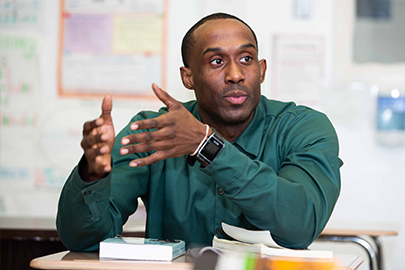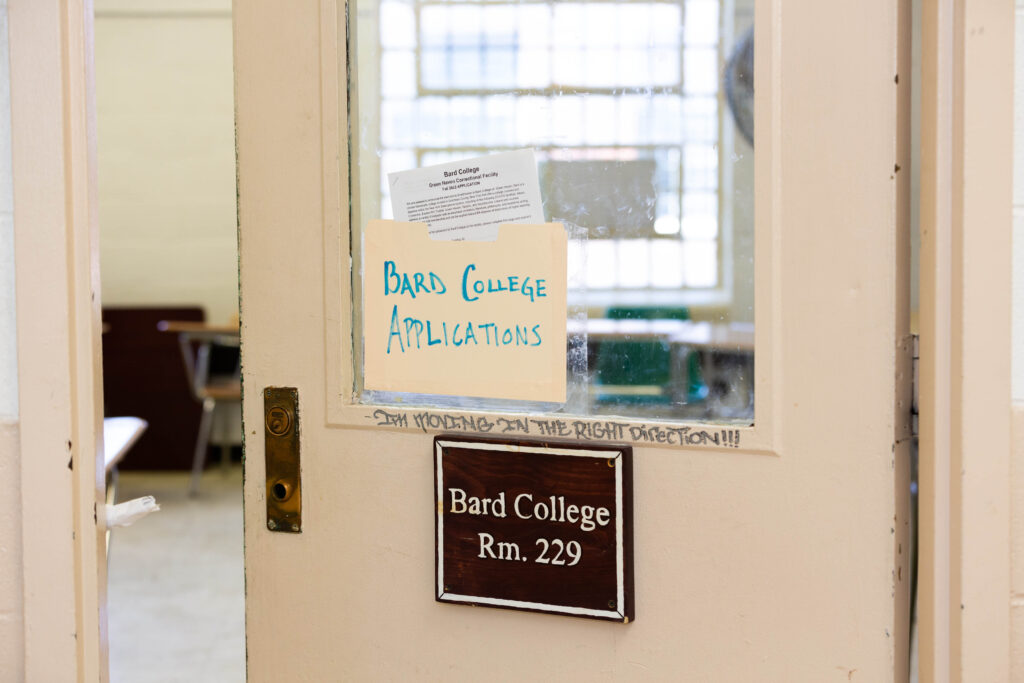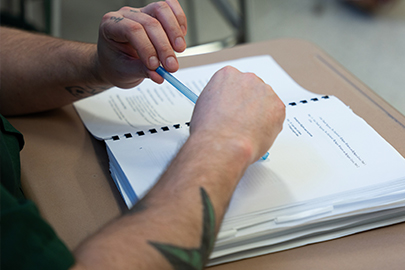By Max Kenner
Mr. Kenner is the founder and executive director of the Bard Prison Initiative at Bard College.
A change taking place right now has the potential to do more good within U.S. prisons than any policy in a generation — good that will extend far beyond the realm of criminal justice. With a 2020 law finally taking full effect, people who are incarcerated can for the first time in decades get Pell Grants, the federal tuition aid for low-income students. The grants are small, but they are critical to rebuilding one of the most important tools we have to reduce crime and mitigate the harms of mass incarceration: college education.
Those of us who have been on the front lines pressing for this change now face a new challenge. We spent 26 years advocating so that what’s known as college-in-prison could be. Now is the time to figure out what it should be.
Decades of experience offer some clear guidance: College-in-prison should be rigorous, holding students to the same standards they would experience on campus. Classes should, wherever possible, be in person rather than remote. Above all, educators should not assume that people in prison are any less capable and curious than other students. College-in-prison can and should reflect the full breadth of American higher education.
College-in-prison was once common in the United States. Its origin is a series of fits and starts through the first half of the 20th century. Then in the 1970s, with the creation of Pell Grants — and the dramatic expansion of the prison population — hundreds of college-in-prison programs began to emerge nationwide. They served as a crucial bulwark of optimism and ambition amid an otherwise horrifying landscape of mass incarceration. And they created pathways to college for those communities we in higher education fail most gravely.
The programs got extraordinary results. Even accounting for selection bias, countless studies have demonstrated their efficacy in reducing the risk of recidivism — by 43 percent according to a report from the RAND Corporation. Still, in 1994, amid a tough-on-crime frenzy, Congress voted to keep people in prison from receiving Pell Grants — saving a mere $35 million per year as those same legislators directed more than $7 billion toward building new prisons. The ban decimated the field nationwide.
College-in-prison saves money and reduces crime. That is why the coalition that has come to support it is unusually broad and bipartisan. It includes conservative evangelicals, liberal academics, allies of the Koch and Soros philanthropic networks, leaders in business and education, progressive criminal justice reformers and prominent members of law enforcement. The process of restoring federal funding began under the Obama administration and was completed by President Donald Trump.
If you’re confused about why Congress would remove education from departments of “correction,” you’re not alone. Since the late 1990s, despite the loss of Pell Grants, a patchwork of boutique and pilot programs — established by religious communities, advocates, students on college campuses and, most of all, incarcerated people themselves — has grown from a tiny number to dozens in recent years. North Carolina, Ohio and Texas have hosted programs for decades. California and New Jersey have re-established statewide systems. New York has an extraordinary, diverse network of partnerships that replicates the diversity of college across the state. And, inspired by Catholic mission, Holy Cross College and the University of Notre Dame, Boston College and Villanova have led the way in their red, blue and purple home states.
At the Bard Prison Initiative, where I work, 20 percent of bachelor’s degree candidates complete degrees in math and science at the same level as students on campus who come from elite high schools around the world. Incarcerated students majoring in history or literature all write original senior theses that are typically 100 pages in length. Students excel in the fields of public health and the social sciences, and the Debate Union has defeated teams from Cambridge, Morehouse and Harvard, among others. They study Mandarin, German or Spanish, computer science and the arts. After release, alumni have gone on to complete graduate degrees at universities including Columbia, Yale, N.Y.U., Cornell and Georgetown. They now hold decision-making positions in government agencies and major philanthropies, they own businesses and serve their communities, and, among many other roles, they are crucial voices in the effort to reshape our criminal justice system. Within two months of release, our research indicates, 85 percent are employed.
This kind of education can exist in prisons nationwide. But to achieve it we must invest. Pell Grants, which average less than $4,500, never covered the cost even for modest programs. Success requires state-level spending, too. Last year New York ended its 26-year ban on state tuition assistance for incarcerated people. Next year, we hope others will follow. If states want less recidivism and better outcomes after prison, they cannot invest in punishment alone.
Within the prisons, we must offer educators a degree of independence. Real change happens in a classroom when the door closes, allowing a person’s identity as prisoner to fade and another, of student, to emerge. For the professionals who run our prisons, that takes courage. But amid the tons of steel and concrete there is surely room for a professor to debate, say, theology or American history without jeopardizing safety and security.
Last, colleges must step up. It’s easy to acknowledge that mass incarceration is a crisis or to call the justice system dysfunctional, violent or racist. Similarly, it’s easy for academics to view prisons as places to conduct academic research or perform community service. It’s another thing to approach them as places filled with talent and ambition, with people poised to take advantage of all we have to offer — people who deserve the same care, inclusivity and optimism that we bring to members of our own communities.
Throughout American history, there have been groups of people that take particular advantage of what education has to offer. Veterans, especially in the years after World War II; immigrants, in almost any era; and, while we rarely talk about it, no group of Americans achieved so much with a little access to education as the generations of Black Americans in the aftermath of Emancipation.
Amid the controversies surrounding higher education today — from high-stakes testing to culture wars to affirmative action — here is one thing Americans can agree on: We are a long way from engaging the full range of American talent in a way that prepares us for the challenges of the 21st century. Tragically, incarcerated Americans are among the best groups to look to for our untapped potential.
College-in-prison is a desperately needed step toward improving justice in America. Still its greatest impact may be on higher education itself: transforming who we think college is for, how we find students and what we imagine they can achieve.



